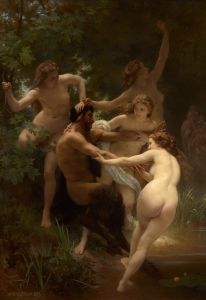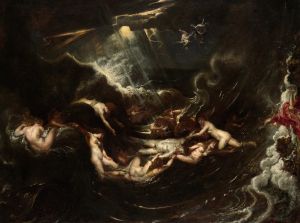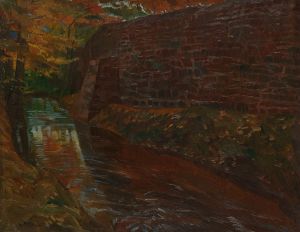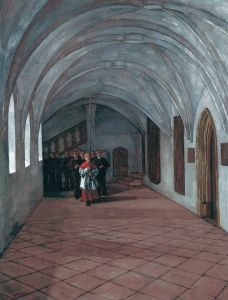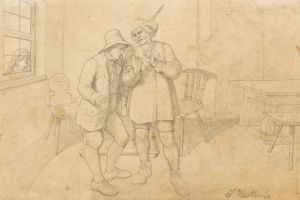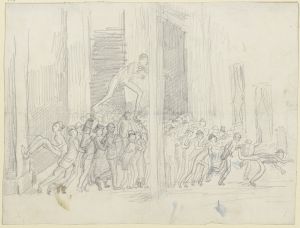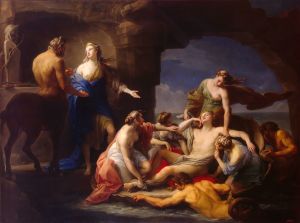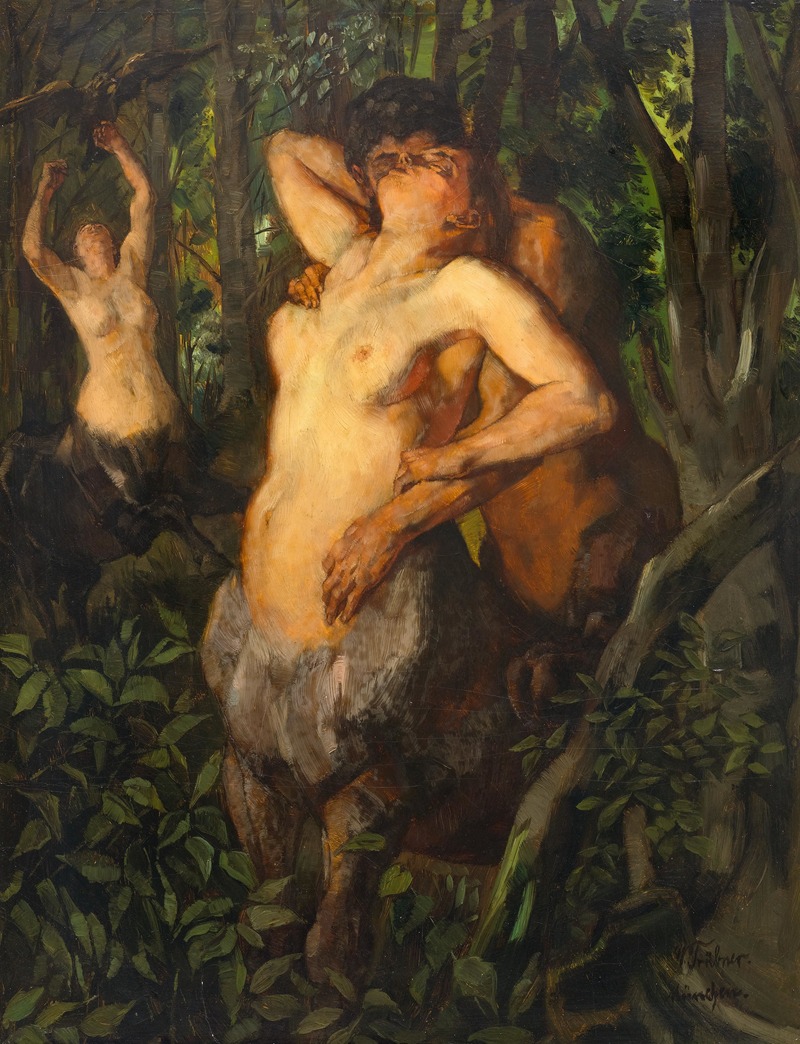
Satyr und Zentauren
A hand-painted replica of Wilhelm Trübner’s masterpiece Satyr und Zentauren, meticulously crafted by professional artists to capture the true essence of the original. Each piece is created with museum-quality canvas and rare mineral pigments, carefully painted by experienced artists with delicate brushstrokes and rich, layered colors to perfectly recreate the texture of the original artwork. Unlike machine-printed reproductions, this hand-painted version brings the painting to life, infused with the artist’s emotions and skill in every stroke. Whether for personal collection or home decoration, it instantly elevates the artistic atmosphere of any space.
Wilhelm Trübner was a German painter associated with the Realist movement, known for his detailed and vivid depictions of everyday life and mythological subjects. One of his notable works is "Satyr und Zentauren" (translated as "Satyr and Centaurs"), which exemplifies his skill in capturing the dynamism and complexity of mythological themes.
"Satyr und Zentauren" is a painting that delves into the rich tapestry of Greek mythology, a common source of inspiration for many artists of Trübner's time. The painting features a satyr and centaurs, creatures that are deeply embedded in mythological lore. Satyrs are often depicted as half-human, half-goat beings associated with Dionysian revelry and the untamed aspects of nature. Centaurs, on the other hand, are typically portrayed as half-human, half-horse creatures, embodying a dual nature of civilization and savagery.
Trübner's work is characterized by its attention to detail and the use of vibrant colors, which bring the mythical scene to life. The painting captures a moment of interaction between the satyr and the centaurs, highlighting the tension and harmony between these mythological figures. The composition of the painting is dynamic, with the figures arranged in a way that suggests movement and narrative, inviting viewers to imagine the story behind the scene.
Wilhelm Trübner was born on February 3, 1851, in Heidelberg, Germany. He studied at the Academy of Fine Arts in Karlsruhe and later in Munich, where he became associated with the Munich Secession, a group of artists who sought to break away from traditional academic art. Trübner was influenced by the works of Wilhelm Leibl and the broader Realist movement, which emphasized the depiction of subjects as they appear in everyday life, without idealization.
Throughout his career, Trübner's work evolved, reflecting his interest in both Realism and the exploration of mythological and historical themes. "Satyr und Zentauren" is a testament to his ability to blend these interests, creating a work that is both grounded in realistic detail and rich in imaginative storytelling.
Trübner's contribution to art extends beyond his paintings; he was also a teacher and an influential figure in the art community of his time. His works are held in various collections and continue to be studied for their technical proficiency and thematic depth.
"Satyr und Zentauren" remains a significant piece within Trübner's oeuvre, illustrating his mastery of both form and narrative. The painting not only showcases his technical skills but also his ability to engage with complex themes, making it a valuable work for understanding the intersection of Realism and mythology in 19th-century art.
Wilhelm Trübner passed away on December 21, 1917, in Karlsruhe, but his legacy endures through his contributions to the art world and his ability to capture the essence of his subjects with both precision and imagination.





